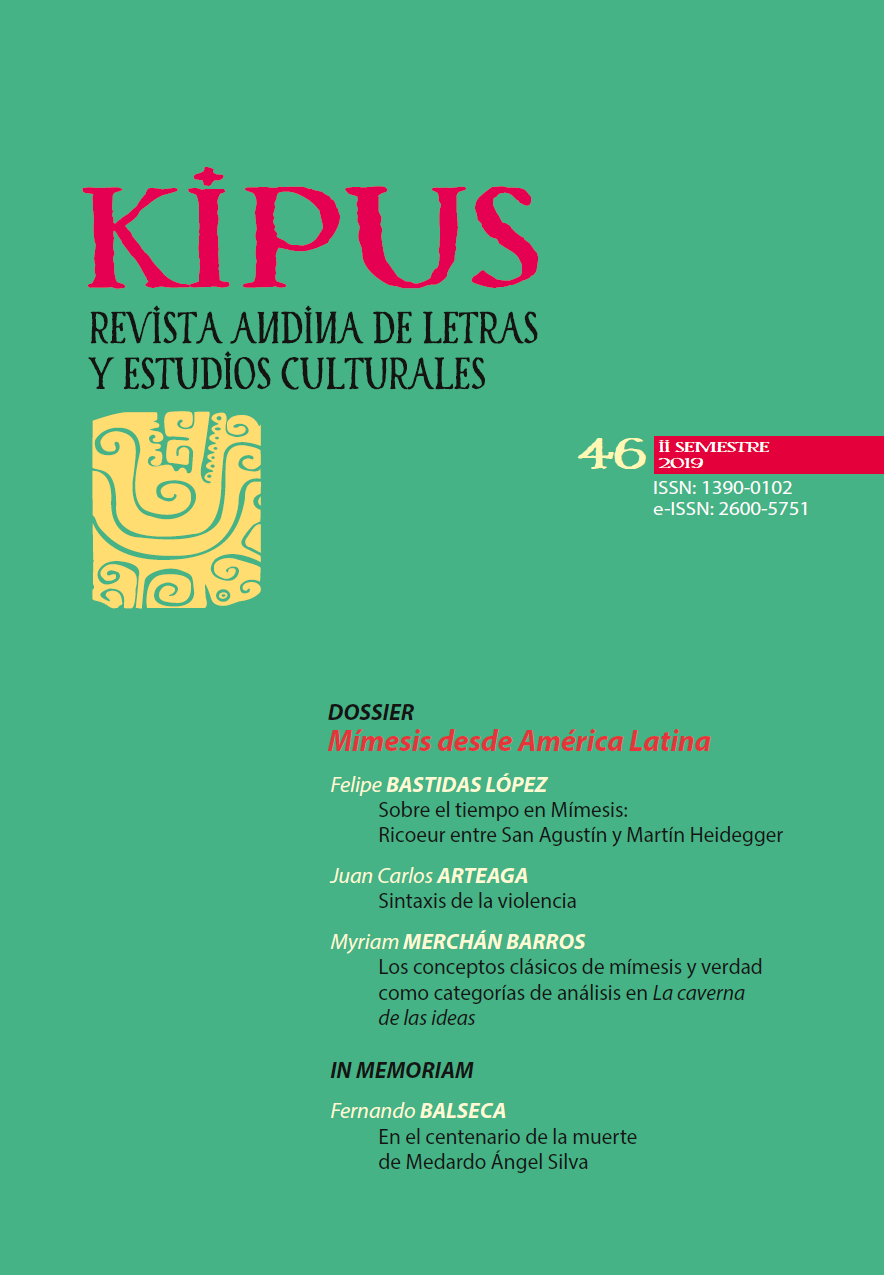Capoeira and protest music: solidarity-based mimesis in favor of education
DOI:
https://doi.org/10.32719/13900102.2019.46.5Keywords:
mimesis, transculturation, antropophagy, culture, orality, protest music, capoeiraAbstract
Among the possibilities of resistence and, more so, of survival developped by enslaved populations, we find the act of mimesis. Conceptualized as a form of disguise and as an appropriation of the discourse of the ‘other’, mimesis enabled maroons to maintain and extend their cultural legacy into the present. Transculturation and cultural anthropophagy make evident how mimesis adopts, transmutes and adapts what it sees as necesary from other cultures so that discourses may survive beyond their enunciators. Its expansive reach can be studied in relation to the musical genre that appears, at the end of the 1960s, with noteworthy strength in the face of the oppression imposed by the dictatorship of Da Costa e Silva in Brazil: protest songs. By means of mimesis, student songs that were intended to mobilize people against the dictator were resignified, decades later, in a capoeira song known today in many distant countries as a song of freedom and a latent memory of enslavement which has not fully ceased. This article searches for the potential bridges that facilitate the use of the same choir in the two songs mentioned and analyses the mimetic process that allows it to function for both themes, although they were structured according to different subjects, in different times and contexts.
Downloads
References
Araújo Simões, R. M. 2008. “La performance ritual de la rueda de capoeira angola”. Revista Textos do Brasil (14): 61-9.
Benítez Rojo, A., y R. Molinero. 2010. La isla que se repite: el Caribe y la perspectiva posmoderna. San Juan: Editorial Plaza Mayor.
Bhabha, H. K. 2013. El lugar de la cultura. Traducido por César Aira. Buenos Aires: Manantial.
Da Silva, M. 2019a. A Licão. https://www.youtube.com/watch?v=rvUs0Ya8AK4.
–––. 2019b. Guerreiro do quilombo. https://www.youtube.com/watch?v=93kmqUeJWN8.
De Andrade, O. 1928. “Manifiesto antropófago”. Revista de Antropofagia (1).
Faria, L. 2004. Mandinga em Manhattan. https://www.youtube.com/watch?-v=K_y_84AwQI0.
Franco de Benedictis, P. A. 2009. Para el pueblo lo que es del pueblo. https://www.youtube.com/watch?v=Pif3ao3aXME.
Galilea, C. 2016. “Caetano Veloso y Gilberto Gil, dos grandes de la canción”. El país. https://elpais.com/cultura/2016/03/02/actualidad/1456929894_554013.html.
Grupo Capostana, C. 2019. Traducciones. https://capostana.wordpress.com/traducciones/.
Guerrero, F., y E. Lovato. 2016. “La bomba del Valle del Chota y Río Mira”. Traversari: Revistas de la Casa de la Cultura Ecuatoriana Benjamín Carrión (3). https://issuu.com/ccegobec/docs/traversari3_final_9a6a8bcf2c1203.
León, E. 2015. “Acercamiento crítico al cimarronaje a partir de la teoría política, los estudios culturales, y la filosofía de la existencia”. Tesis doctoral, Universidad Andina Simón Bolívar, Sede Ecuador.
Letras.com.br. 2019. Biografía de Geraldo Vandré. http://www.letras.com.br/#!-biografia/geraldo-vandre.
Morales Agüero, J. 2019. “Flores contra fusiles”. https://verbiclara.wordpress.com/2013/09/25/flores-contra-fusiles/.
Ortiz, F. 2002. Contrapunteo cubano del tabaco y el azúcar. Advertencia de sus contrastes agrarios, económicos, históricos y sociales, su etnografía y su transculturación. Madrid: Cátedra/Música Mundana Maqueda.
Rama, A. 2004. La ciudad letrada. Santiago: Tajamar. Topazio, G. de C. 2015. Negro na senzala. https://www.youtube.com/watch?-v=I4ycaVotqqs.
Tyrallova, L. 2007. Capoeira-Arte marcial ou filosofia da vida. http://is.muni.cz/th/110274/ff_b?furl=%2Fth%2F110274%2Fff_b;so=nx;lang=en;info=1;zpet=%2Fvyhledavani%2F%3Fsearch%3Dcapoeira%26start%3D1.
Vancouver, G. A. C. 2014. “Axé Vancouver-Mestre Barrão”. axevancouver.com/mestre-barrao/.
Vandré, G. 2019a. Berimbau. https://www.youtube.com/watch?v=YiCgS-e03Es.
–––. 2019b. Hora de lutar. https://www.youtube.com/watch?v=BFU7sEjqIcQ.
–––. 2019c. Ladainha. https://www.youtube.com/watch?v=Lk7MoPXZ8k4.
Vieira, L. R. 1998. O jogo da capoeira: Corpo e cultura popular no Brasil. 2.ª ed.Río de Janeiro: Sprint.
Downloads
Published
How to Cite
Issue
Section
License

This work is licensed under a Creative Commons Attribution-NonCommercial-ShareAlike 4.0 International License.







.png)
